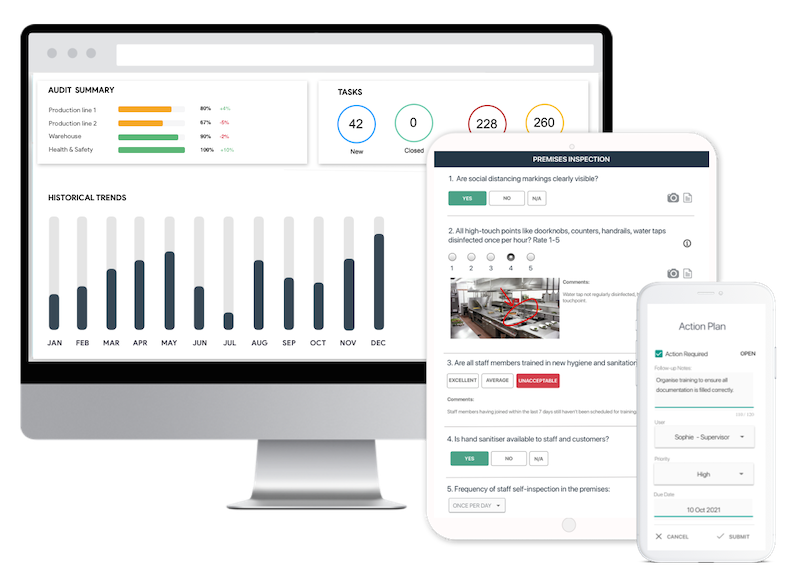- Library ›
- Food & Hospitality ›
- Warehouse Food Safety Checklist
Warehouse Food Safety Checklist
Current Good Manufacturing Practice
Facility And Grounds
18. Is plumbing of adequate size and design to carry sufficient quantities of water to required locations; properly convey sewage and liquid disposable waste from the plant; provide adequate floor drainage; and prevent backflow or cross connections between piping systems carrying fresh and waste water or sewage?
|
Photo
Comment
|
Personnel
Equipment
Processes And Controls
Is this sample what you are looking for?
Sign up to use & customise this template, or create your own custom checklist:
Checklist by GoAudits.com – Please note that this checklist is intended as an example. We do not guarantee compliance with the laws applicable to your territory or industry. You should seek professional advice to determine how this checklist should be adapted to your workplace or jurisdiction.
Easy inspection app for your digital checklists
- Conduct inspections anytime, anywhere - even offline
- Capture photos as proof of compliance or areas needing attention
- Instantly generate and share detailed reports after the inspections
- Assign & track follow-up tasks, view historical trends on a centralized dashboard

